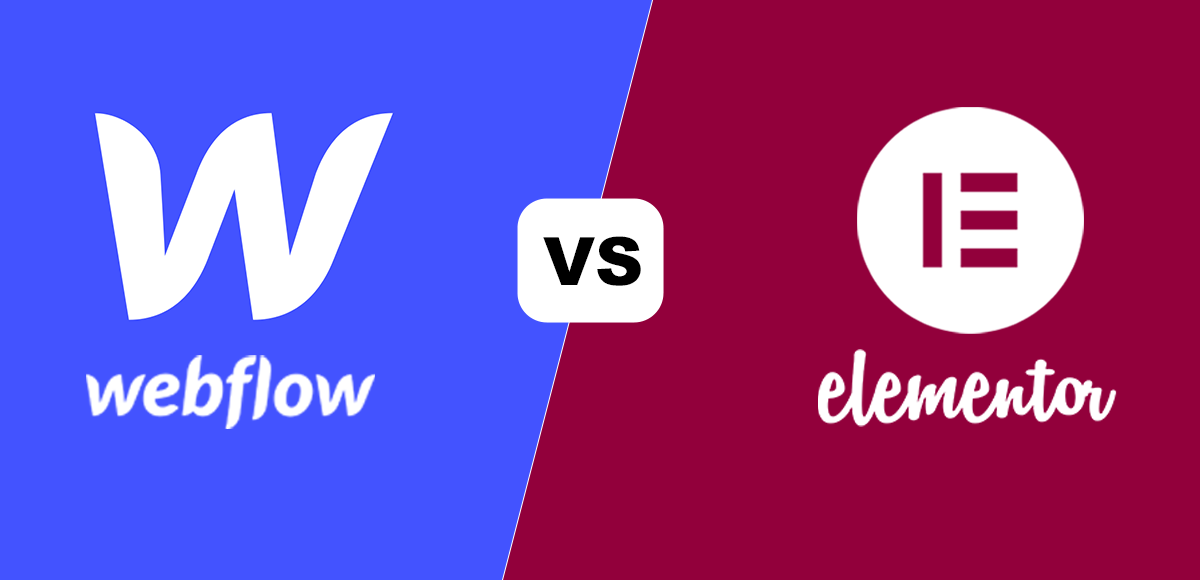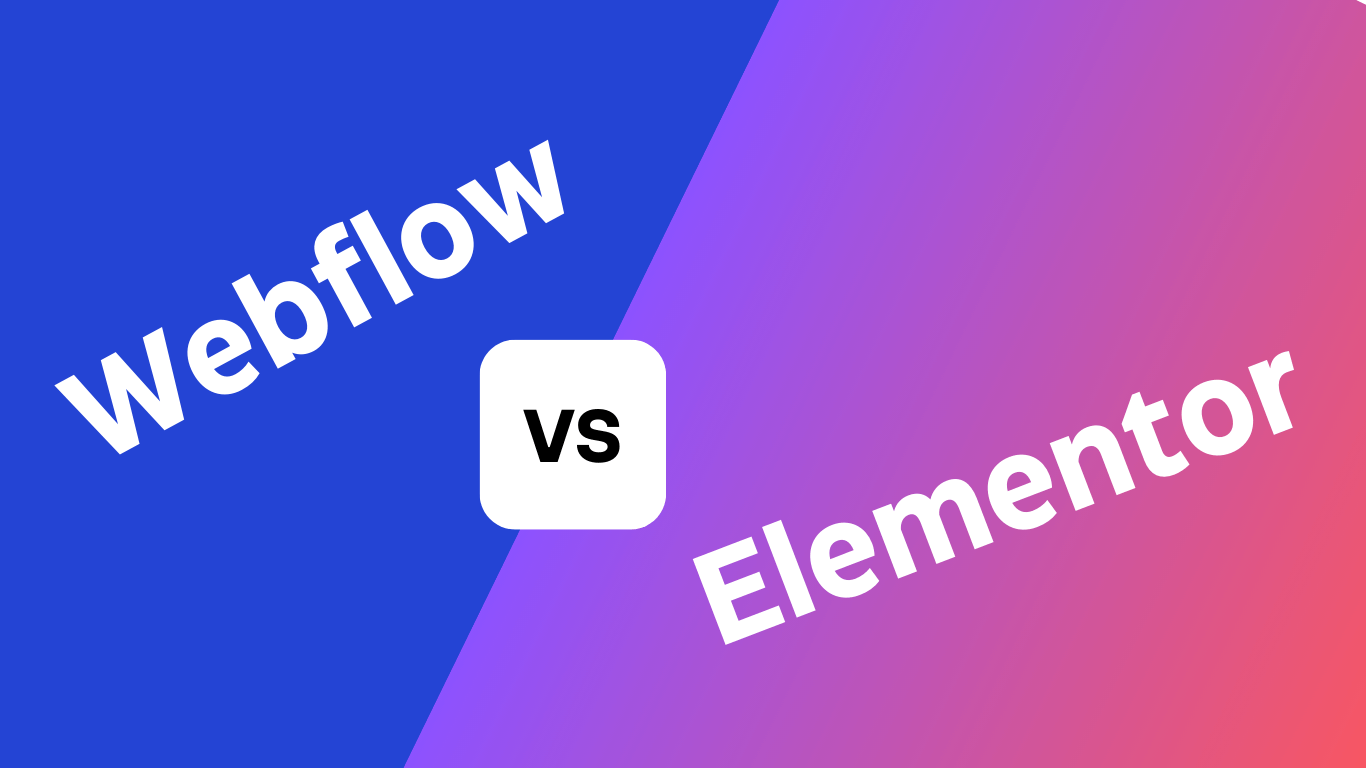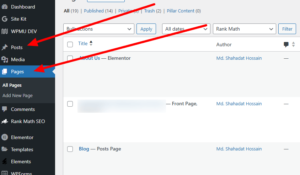Elementor is a WordPress plugin, while Webflow is a standalone website builder. Both tools cater to different needs and preferences.
Elementor offers robust design capabilities directly within WordPress, making it ideal for WordPress users. Webflow provides a comprehensive design platform, allowing users to build websites without needing to know code. Each tool has its unique strengths. Elementor integrates seamlessly with WordPress, enhancing the site’s functionality through plugins and themes.
Webflow, on the other hand, delivers a more visual, design-first approach, offering complete control over the website’s look and feel. Choosing between them depends on your specific requirements, technical expertise, and platform preference. Both are excellent options for creating professional websites.
Ease Of Use
Choosing between Elementor and Webflow often comes down to ease of use. Both platforms offer powerful tools, but how easy are they to use? Let’s delve into their user interface and learning curve.
User Interface
Elementor boasts a clean and intuitive interface. The drag-and-drop functionality makes designing simple. You can see changes in real-time. This helps in visualizing your site easily.
Webflow has a more complex interface. It offers advanced design options. The design canvas resembles a graphic design tool. This can be overwhelming for beginners. However, experienced designers may appreciate the detailed controls.
| Feature | Elementor | Webflow |
|---|---|---|
| Drag-and-Drop | Yes | Yes |
| Real-Time Editing | Yes | Yes |
| Advanced Design Options | No | Yes |
Learning Curve
The learning curve for Elementor is gentle. Beginners can start quickly. The interface is user-friendly and intuitive. Tutorials and community support are abundant.
Webflow has a steeper learning curve. Mastering it requires time and effort. The platform targets professional designers. Detailed guides and courses are available, but they take time to follow.
- Elementor: Quick to start, lots of tutorials.
- Webflow: Takes time, aimed at professionals.
// Example of a simple Elementor drag-and-drop action let element = document.createElement('div'); element.className = 'new-element'; document.querySelector('.elementor-container').appendChild(element);

Credit: www.flow.ninja
Design Flexibility
Design flexibility is crucial for any web designer. Elementor and Webflow offer unique features. Both provide powerful tools for creating stunning websites. This section explores their customization options and template availability.
Customization Options
Elementor and Webflow offer robust customization options. Elementor uses a drag-and-drop editor. This makes it easy to design without coding. You can adjust every element. Change colors, fonts, and sizes with ease.
Webflow, on the other hand, is more advanced. It combines visual design with powerful coding features. You can tweak every detail. It supports custom CSS, JavaScript, and HTML. This provides more control over your design.
Template Availability
Both platforms offer many templates. Elementor has over 300 templates. These templates cover various industries. They are fully customizable. You can adjust them to fit your brand.
Webflow also offers a rich template library. You can find templates for different niches. They are well-designed and easy to customize. Webflow’s templates are responsive, ensuring they look good on any device.
| Feature | Elementor | Webflow |
|---|---|---|
| Drag-and-Drop Editor | Yes | Yes |
| Custom CSS | No | Yes |
| Template Count | 300+ | Varied |
| Code Integration | No | Yes |
Design flexibility is a key feature in both Elementor and Webflow. Your choice depends on your needs and skills. Elementor is great for beginners. Webflow offers more for advanced users.
Performance
Performance is crucial in web design. Both Elementor and Webflow offer unique advantages. This section explores their loading speed and SEO capabilities.
Loading Speed
Loading speed is a significant factor in user experience. Faster websites retain more visitors. Let’s look at how Elementor and Webflow perform:
| Feature | Elementor | Webflow |
|---|---|---|
| Page Load Time | Moderate to Fast | Fast |
| Code Optimization | Requires Plugins | Built-In |
| Server-Side Rendering | Limited | Excellent |
Webflow often has the edge in speed. Its built-in code optimization and server-side rendering make it faster.
Seo Capabilities
SEO is critical for visibility. Both platforms offer SEO tools, but their approaches differ.
- Elementor: Relies on WordPress plugins for SEO.
- Webflow: Offers built-in SEO settings.
Elementor users often use Yoast SEO or Rank Math plugins. These plugins offer comprehensive SEO tools. Webflow has native SEO settings. These settings include meta tags, alt text, and clean URLs.
Both platforms support creating responsive designs. Responsive designs improve mobile SEO. Webflow’s clean code also helps in faster indexing by search engines.

Credit: athemes.com
Pricing
Pricing is a critical factor when choosing a website builder. Elementor and Webflow have different pricing models. Understanding these differences helps you make an informed decision.
Cost Comparison
Elementor offers a free version and several paid plans. The free version includes basic features. The paid plans provide advanced functionalities and start at $49 per year.
Webflow operates on a monthly subscription basis. It has a free starter plan but limits functionalities. The paid plans start at $12 per month, billed annually.
| Feature | Elementor Free | Elementor Pro | Webflow Free | Webflow Paid |
|---|---|---|---|---|
| Basic Features | Yes | Yes | Yes | Yes |
| Advanced Design Tools | No | Yes | No | Yes |
| Custom Code | No | Yes | No | Yes |
| Hosting | No | No | Yes | Yes |
Value For Money
Elementor provides great value with its free version. You get basic features and a simple editor. The Pro version unlocks advanced tools. It is cost-effective for small businesses and freelancers.
Webflow offers a robust set of tools even in its free plan. The paid plans justify their costs. You get advanced design capabilities and hosting included. It is ideal for designers and agencies needing more control.
- Elementor Free: Best for basic websites.
- Elementor Pro: Suitable for advanced designs.
- Webflow Free: Good for trying out the platform.
- Webflow Paid: Best for comprehensive projects.
Both platforms have their strengths. Your choice depends on your needs and budget. Evaluate both options to find what suits you best.
Features
Elementor and Webflow are two powerful tools for building websites. Each offers unique features that cater to different user needs. This section delves into the core and advanced functionalities of both platforms.
Core Features
Both Elementor and Webflow come packed with essential features that make website building a breeze.
| Feature | Elementor | Webflow |
|---|---|---|
| Drag-and-Drop Builder | Yes | Yes |
| Responsive Design | Yes | Yes |
| Pre-designed Templates | Yes | Yes |
| Custom CSS | Yes | Yes |
Advanced Functionalities
For users seeking more robust options, both platforms offer advanced features.
- Elementor:
- Theme Builder
- Popup Builder
- Custom Fonts and Icons
- Webflow:
- CMS and Blog Functionality
- Interactions and Animations
- Client Billing
These advanced functionalities provide greater control and flexibility. Elementor’s Theme Builder helps design every part of a site. Webflow’s CMS makes content management easier. Both tools enhance the user experience.

Credit: createdbyred.com
Support And Community
When choosing a website builder, support and community play a crucial role. Both Elementor and Webflow offer robust options. Let’s dive into what each platform provides.
Customer Support
Elementor offers several support channels. Their 24/7 customer service is highly rated. You can reach them via email or live chat. They also have an extensive knowledge base for quick help.
Webflow also provides strong customer support. They offer email support and a detailed knowledge base. They include video tutorials to help you. Webflow’s customer support team is known for quick responses.
Community Resources
The Elementor community is vast and active. You will find many Facebook groups and forums. These are great for getting advice. Their official blog also offers many tips and tutorials.
Webflow also has a thriving community. They host Webflow University with many courses. Their forums and social media groups are very active. You can easily get help from other users.
| Feature | Elementor | Webflow |
|---|---|---|
| 24/7 Customer Service | Yes | No |
| Knowledge Base | Extensive | Comprehensive |
| Video Tutorials | Yes | Yes |
| Community Forums | Active | Thriving |
Conclusion
Choosing between Elementor and Webflow depends on your needs. Elementor is user-friendly and great for WordPress. Webflow offers more design flexibility and is ideal for custom projects. Both platforms have their strengths. Consider your project’s requirements and skill level to make the best choice.
Happy designing!






